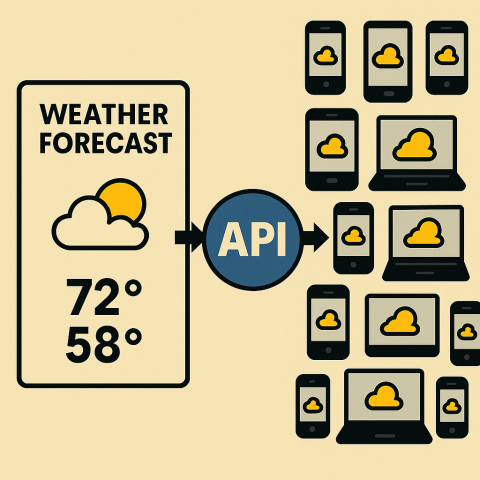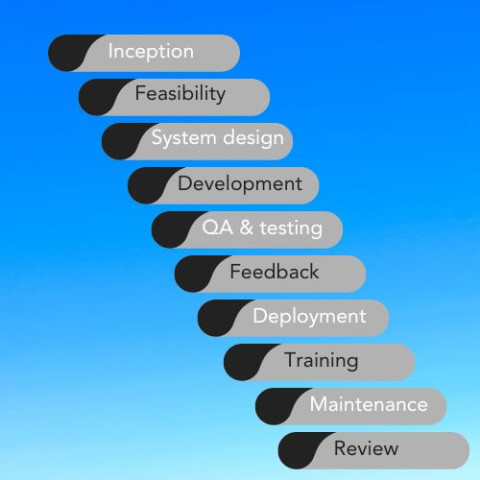The types of iterative Agile methodology, which one’s for you?
Agile Methodology Diagram
|
Agile Methodology |
Release Date |
Best Suitable For |
|
Rapid Application Development (RAD) |
1980’s |
Projects requiring fast development times and where requirements are expected to change frequently. Ideal for rapid iteration and prototyping. |
|
Dynamic Systems Development Method (DSDM) |
Circa 1994 |
Projects needing a robust foundation and full lifecycle coverage, typically in corporate settings with fixed budgets and timelines. |
|
Scrum |
Circa 1995 |
Small to medium-sized teams seeking flexibility and rapid iterations, applicable to both software and non-software projects. |
|
Extreme Programming (XP) |
Circa 1996 |
Projects with frequent changes and a high priority on quality control, often in start-up's and software development. |
|
Crystal |
Circa 1996 |
Smaller, co-located teams focusing on individual talents and communication, suitable for projects with varying priorities. |
|
Prince2 |
Circa 1996 |
PRINCE2 is best used in environments that require structured project management, clear roles and responsibilities, and where projects are divided into manageable stages. It's particularly suited for businesses that prioritise governance, documentation, and where there is a need to align with formal, process-based standards. |
|
Feature-Driven Development (FDD) |
Circa 1997 |
Larger projects and teams, emphasising clear structure and predefined workflows, common in enterprise environments with complex systems. |
|
Lean Software Development |
1990s |
Environments aiming to eliminate waste and focus on delivering value, suitable for both manufacturing and software industries. |
|
Agile Modelling (AM) |
Circa 2002 |
Projects requiring flexible and adaptable modelling, works well with other Agile methodologies. |
|
Kanban |
Early 2000s |
Continuous production environments and maintenance projects, ideal for teams improving workflow and efficiency without structured sprints. |
|
Large-Scale Scrum (LeSS) |
Circa 2005 |
Large-scale product development, suitable for organisations transitioning to Agile on a large scale. |
|
Agile Unified Process (AUP) |
Circa 2005 |
Projects needing a scalable and customisable approach, blending Agile practices with disciplined project management. |
|
Scaled Agile Framework (SAFe) |
Circa 2011 |
Large enterprises looking to apply Agile practices at scale across multiple teams or departments. |
|
Disciplined Agile Delivery (DAD) |
Circa 2012 |
Complex, enterprise-level projects requiring an adaptive approach that includes various Agile and lean practices. |
|
DevOps Integration |
Not specified |
Enhancing collaboration between software development and operations teams, suitable for projects prioritising continuous delivery. |
|
Adaptive Project Framework (APF) |
Not specified |
Projects that are highly uncertain and dynamic, where goals and solutions evolve during the project. |
|
Extreme Project Management (XPM) |
Not specified |
Highly flexible and fast-paced environments, suitable for projects with very dynamic requirements and high change frequency. |
|
Adaptive Software Development (ASD) |
Not specified |
Projects that require constant adaptation and learning, suitable for fast-changing and uncertain environments. |
Please note that the release dates for DevOps Integration, Adaptive Project Framework (APF), Extreme Project Management (XPM), and Adaptive Software Development (ASD) are not specified in this context as they are concepts or methodologies that evolved over time rather than being 'released' in a traditional sense.
DID YOU KNOW
The top three benefits of agile project techniques include the ability to handle changing priorities (70%), project visibility (65%), and business/IT alignment (65%).
(webinarcare.com)
Agile Methodologies
1.Dynamic Systems Development Method (DSDM)
The Dynamic Systems Development Method is an Agile method that focuses on a full project lifecycle. Because of this, DSDM has a more rigorous structure and foundation, unlike other Agile methods.
There are four main phases of DSDM:
- · Feasibility and business study
- · Functional mode or prototype iteration
- · Design and build iteration
- · Implementation
2.Scrum
Scrum is one of the most popular Agile methodologies.
It's a framework for managing and completing complex projects Scrum is a framework that facilitates teamwork by defining roles (Scrum Master, Product Owner, and Development Team), events (Sprints, Sprint Planning, Daily Stand-ups, Sprint Review, and Sprint Retrospective), and artefacts (Product Backlog, Sprint Backlog, and Increment). Scrum emphasises short, manageable phases of work called Sprints, typically lasting two to four weeks.
Scrum is a common Agile methodology for small teams and involves sprints. The team is led by a Scrum master whose main job is to clear all obstacles for others executing the day-to-day work.
Scrum teams meet daily to discuss active tasks, roadblocks, and anything else that may affect the development team.
Sprint planning: This event kicks off the sprint. Sprint planning outlines what can be delivered in a sprint (and how).
Sprint retrospective: This recurring meeting acts as a sprint review—to iterate on learnings from a previous sprint that will improve and streamline the next one.
3.Extreme Programming (XP)
Typically used in software development, Extreme Programming (XP) is an Agile framework that outlines values that will allow your team to work together more effectively.
Extreme Programming (XP) is focused on improving software quality and responsiveness to changing customer requirements. It promotes high customer involvement, rapid feedback loops, continuous testing, and planning at short and frequent intervals. XP practices include pair programming, test-driven development (TDD), continuous integration (CI), and collective code ownership.
The five values of XP include:
- Communication
- Simplicity
- Feedback
- Courage
- Respect
Similar to daily Scrum stand-up's, there are regular releases and iterations, yet XP is much more technical in its approach. If your dev team needs to quickly release and respond to customer requests, XP focuses on the “how” it will get done.
4.Crystal
Crystal is a family of Agile methodologies such as Crystal Clear, Crystal Yellow, and others, each tailored to different team sizes and system criticality. The Crystal family focuses on people, their interactions, and community as the primary drivers of success in software development.
5.Prince2
PRINCE2 itself is a structured project management methodology focused on governance and organisation, whereas Agile is a set of principles for software development emphasising flexibility, continuous improvement, and customer satisfaction. They originate from different project management traditions: PRINCE2 from a more traditional, plan-driven approach, and Agile from a more adaptive, iterative approach.
However, recognising the benefits of Agile methodologies and the need for greater flexibility, the creators of PRINCE2 developed PRINCE2 Agile. PRINCE2 Agile is an extension that combines the governance and structure of PRINCE2 with the flexibility and responsiveness of Agile. It provides guidance on applying Agile methods and techniques within the PRINCE2 framework. This combination aims to offer the best of both worlds: the thorough planning, control, and governance of PRINCE2 along with the adaptability and customer focus of Agile practices.
6.Feature-Driven Development (FDD)
FDD combines industry best practices into a cohesive whole. This model-driven, short-iteration process focuses on building and designing features, enhancing visibility and predictability of the development process.
Feature-Driven Development is a client-centric, architecture-driven software development methodology. It involves designing and building features based on client-valued functions. FDD combines model-driven development with feature lists, planning by feature, and building by feature.
7.Lean-Agile Procurement
This approach aims to minimise waste and ensure value in the procurement process. It adapts Agile methodologies to the procurement cycle, fostering better collaboration between clients and suppliers and enabling faster decision-making.
Lean Software Development is adapted from lean manufacturing principles and practices. It focuses on optimising efficiency and minimising waste in software production.
Key principles include
- Eliminating waste
- Amplifying learning
- Deciding as late as possible
- Delivering as fast as possible
- Empowering the team
- Building integrity in, and seeing the whole.
8.Agile Modelling (AM)
Agile Modelling (AM) is an approach that supplements other Agile methodologies like Scrum or Extreme Programming (XP) by providing guidance on how to model and document software projects effectively in an Agile context. It’s not a standalone Agile methodology per se but rather a collection of practices and principles aimed at improving the modelling process in software development. The main goal of Agile Modelling is to utilise modelling as a tool for understanding and communication among team members while maintaining the principles and values of Agile development.
9.Kanban
Kanban is a visual approach to Agile. Teams use online Kanban board tools to represent where certain tasks are in the development process. Tasks are represented by cards on a board, and stages are represented in columns. As team members work on tasks, they move cards from the backlog column to the column that represents the stage the task is in.
This method is a good way for teams to identify roadblocks and to visualise the amount of work that’s getting done.
DID YOU KNOW
28% of companies believe that the adoption of agile methods have improved their project success rates.
(webinarcare.com)
10.Large-Scale Scrum (LeSS)
Large-Scale Scrum (LeSS) is an extension of Scrum aimed at scaling Agile processes to larger organisations and projects involving multiple teams.
LeSS works under the philosophy of "More with LeSS," meaning achieving more value with fewer roles, less management, and less complexity.
It is divided into two frameworks
1. LeSS for up to eight teams
2. LeSS Huge for larger implementations
Implementing LeSS successfully requires a deep commitment to Agile principles and typically involves significant organisational changes.
11.Agile Unified Process (AUP)
The Agile Unified Process (AUP) is a simplified version of the Rational Unified Process (RUP). It emphasises an Agile approach to software development by focusing on a simple and practical methodology. The AUP applies iterative and incremental approaches within a structured framework.
(Rational Unified Process (RUP) is a comprehensive software development process framework that provides a disciplined approach to assigning tasks and responsibilities within a development business.)
12.Scaled Agile Framework (SAFe)
SAFe is an advanced framework that applies Agile principles to larger organisations and teams. It provides a guide to aligning strategy with execution, promoting collaboration across multiple Agile teams, and scaling Agile from individual teams to entire enterprises.
13.Disciplined Agile Delivery (DAD)
Disciplined Agile Delivery (DAD) is a process decision framework that provides a comprehensive approach to Agile project management and software delivery.
DAD extends beyond the product-focused life cycles of traditional Agile methods by incorporating aspects of the entire product delivery process. It integrates with various Agile techniques.
DAD emphasises flexibility and offers guidance for the entire lifecycle, from project initiation to delivery, enabling teams to tailor their approach to fit the project's context and complexity. It addresses areas often left unguided by other Agile frameworks, such as governance, architecture, and portfolio management, making it a more holistic approach to Agile adoption and scaling.
14.DevOps Integration
DevOps Integration combines Agile with DevOps practices enhancing collaboration between development and operations teams, streamlines the software delivery process, and accelerates time to market. Practices like Continuous Integration and Continuous Delivery (CI/CD)* are central to this approach.
*Continuous Integration and Continuous Delivery (CI/CD) is a software development practice that emphasises frequent integration of code changes into a shared repository, coupled with automated testing and deployment processes, enabling teams to deliver high-quality software more rapidly and reliably.
15.Adaptive Project Framework (APF)
The Adaptive Project Framework, also known as Adaptive Project Management (APM), grew from the idea that unknown factors can show up at any time during a project. This technique is mainly used for IT projects where more traditional project management techniques don’t apply.
This framework is based on the idea that project resources can change at any time. For example, budgets can change, timelines can shift, or team members working on the project may transition to different teams. APF focuses on the resources that a project has, as opposed to the resources a project needs.
16.Extreme Project Management (XPM)
This type of project management is often used for very complex projects with a high level of uncertainty. This approach involves constantly adapting processes until they lead to the desired result. This type of project involves many spontaneous changes and it’s normal for teams to switch strategies from one week to the next.
XPM requires a lot of flexibility. This is one of the reasons why each sprint is short—only a few weeks maximum. This methodology allows for frequent changes, trial-and-error approaches to problems, and many iterations of self-correction.
17.Adaptive Software Development (ASD)
This Agile methodology enables teams to quickly adapt to changing requirements. The main focus of this process is continuous adaptation. The phases of this project type—speculate, collaborate, and learn—allow for continuous learning as the project progresses.
It’s not uncommon for teams running ASD to be in all three phases of ASD at once. Because of its non-linear structure, it’s common for the phases to overlap. Because of the fluidity of this type of management, there’s a higher likelihood that the constant repetition of the three phases helps team members identify and solve problems much quicker than standard project management methods.
18.Feature Driven Development (FDD)
Feature Driven Development blends different Agile best practices. While still an iterative method of project management, this model focuses more on the exact features of a software that the team is working to develop. Feature-driven development relies heavily on customer input, as the features the team prioritises are the features that the customers need.
This model also allows teams to update projects frequently. If there is an error, it's quick to cycle through and implement a fix as the phases of this framework are constantly moving.
19.Rapid Application Development (RAD)
Rapid Application Development (RAD) is an Agile methodology that emphasises quick and iterative development cycles, aiming to produce high-quality systems with low investment costs.
RAD focuses on engaging end-users through a series of prototypes to gather feedback and refine the system in real time. This approach allows for the rapid creation and iteration of software applications, making it ideal for projects requiring fast development times and where requirements are expected to change frequently. RAD promotes a highly collaborative environment where client feedback is integrated at every step of the development process, leading to greater customer satisfaction and more effective end products.
Each of these methodologies takes the foundational principles of Agile—such as collaboration, customer feedback, and iterative development—and applies them in distinct manners tailored to different types of projects and environments. The decision to adopt a specific Agile methodology is influenced by a variety of factors. These include the unique demands and objectives of the project in question, the level of experience and familiarity the team has with Agile practices, and the overall culture and workflow of the business.
In choosing the right methodology, stakeholders must consider how well a particular approach aligns with their project goals, how it complements the team's working style, and whether it is suitable for the organisation's operational dynamics. Additionally, factors such as project size, complexity, and customer involvement play crucial roles in determining the most effective Agile framework to implement. The ultimate aim is to select a methodology that not only adheres to Agile principles but also maximises efficiency, fosters effective collaboration, and ensures the delivery of high-quality outcomes in alignment with customer needs and expectations.

Mailchimp Alternatives Guide 2025
Is Mailchimp still the best FOR EMAIL MARKETING? Or are UK businesses find...
5 min read

The Hidden Cost of Poor System Integration
Why Poor Integration Between Systems Is Holding Your Business Back And How...
8 min read

Admin Overload: The Silent Business Killer
The cost of manual, repetitive admin tasks In countless small and medium-s...
3 min read


